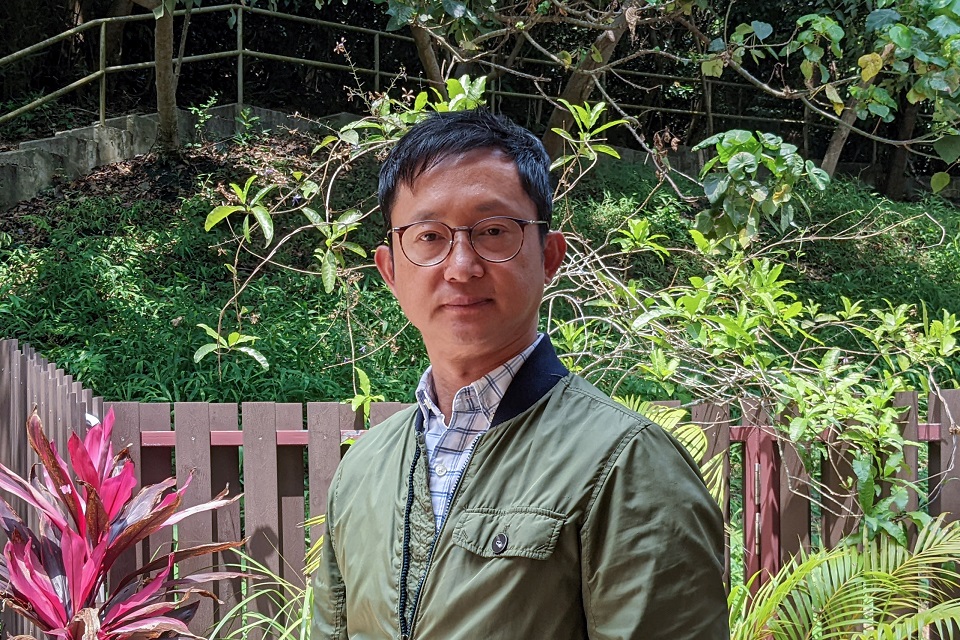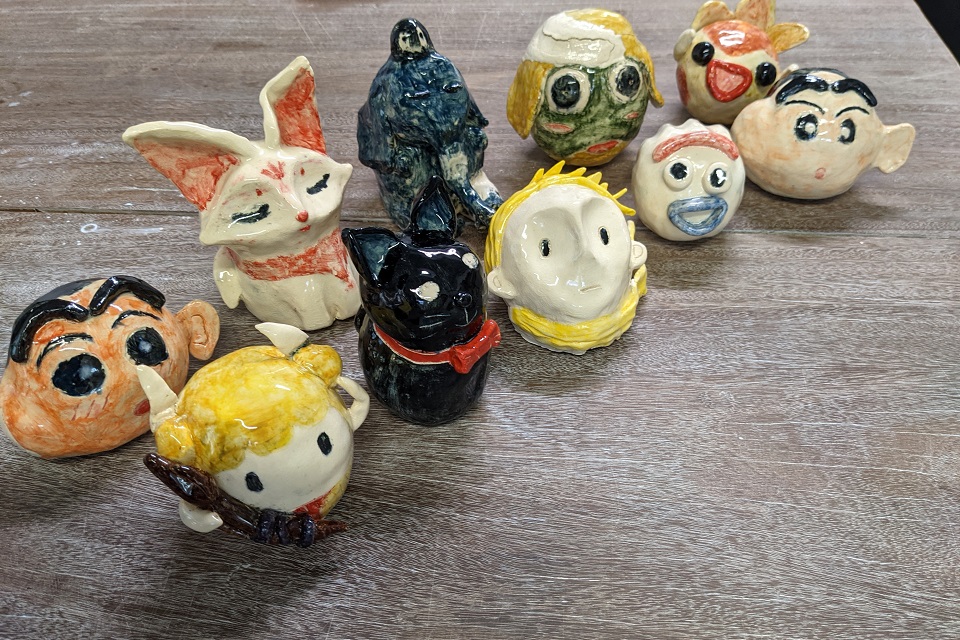Discover HKBU
Express yourself: Sharing the healing power of art
27 Apr 2022
Many people have experienced the soothing nature of art, and HKBU’s Dr Joshua Nan is exploring how art therapy can improve people’s emotional wellbeing and alleviate depression.
“Art therapy is relatively new, but artists, educators, psychologists and scientists are all exploring how it impacts the brain,” says Dr Nan, Assistant Professor of the Department of Social Work. “Art therapy can connect different parts of the brain, as the left and right sides work together when we are making art, and it can improve our physical and mental health.”
As an expert in art therapy, Dr Nan is also sharing his expertise with art therapists and social workers around the world, and the results could help people who are struggling with stress and depression.
“In particular, I’m looking at art and mental health, and how art therapy impacts our emotions and the way we regulate our emotions,” he says. “Art can also help eliminate misunderstanding, and mental health patients can use art to show their strength and avoid social labels.”
Addressing depression
Depression is one of the most common mental health disorders, and the World Health Organisation estimates that around 5% of the global population suffer from the condition. The situation in Hong Kong is even more severe, with numerous studies highlighting the prevalence of mental health issues in the territory, and the COVID-19 pandemic has compounded such problems over the past two years.
As a result, there is an urgent need for cost-effective, community-based non-pharmacological treatments, and art therapy is an approach that can meet this demand. In particular, Dr Nan’s breakthrough research has explored how clay and mix-media art therapy can improve psychological outcomes in different groups, with promising results seen in school children as well as professionals.
In one promising study funded by the University Grants Committee’s General Research Fund, Dr Nan is conducting a randomised control trial to explore the impact of clay making on around 100 secondary school students in Hong Kong. As part of the research, he has been monitoring the levels of a stress-related hormone called cortisol in the students’ hair.
“The study is still ongoing, but so far the results are very positive and a bit of a breakthrough, as we have found that art therapy helps the students regulate their emotions and control their impulses. It also provides them with strategies for controlling stress,” says Dr Nan.
A related study on junior secondary school students that involved using mixed-media art also had a similar outcome, as despite their high stress levels, it was found that making mixed-media art pieces helped the students regulate their emotions.
“Pupils who joined the mixed-media group showed big reductions in their hair cortisol levels, and it also enhanced their psychological function,” he says. Dr Nan is also working with colleagues across HKBU, including Professor Chris Wong of the Department of Biology, to analyse the hair cortisol samples from all the participants of the two projects, and he is currently writing up the final research results.
Use of art
It was a belated return to a childhood passion for art that led Dr Nan down the path he is on today. Having originally studied Social Work at HKBU, Dr Nan became a registered social worker, but due to a longstanding interest in spirituality and the meaning of life, he moved to Canada where he received a master’s degree in Divinity.
He then brought his love of art and social work together with a master’s in Art Therapy in the United States. This was followed by a PhD at the University of Hong Kong, which further explored the use of art therapy, and Dr Nan then supplemented his academic work with additional professional training in different artistic mediums.
Dr Nan has also continued to develop and incorporate different therapeutic approaches that use art into his social work research and practice. As part of his outreach and knowledge exchange work, Dr Nan has conducted workshops with professionals such as social workers, and he found that his innovative Use of Art model and training helped to enhance participants’ professional performance, and it reduced burnout and compassion fatigue and enhanced their skills and efficacy.
“Art therapy is a profession, and there’s a fine line between art therapy and the use of art,” says Dr Nan. “I introduced the Use of Art model as a means to enhance the professional skills of social workers, teachers and sometimes even therapists and clinical psychologists.”
Dr Nan is also planning on further developing the tool, and he has promoted its use at conferences and workshops in Europe and the United States, in particular targeting art therapists who are not familiar with the model. His research has also made a splash, and he has published in high impact journals such as the Journal of Affective Disorders and written a chapter in The Neuroscience of Depression on clay art therapy.
Enhancing the power of art
At HKBU, Dr Nan has been introducing students to art therapy through his very popular “Creativity, Wellbeing and Art Therapy” service-learning course, which was launched with the assistance of the Centre for Innovative Service-Learning (CISL).
“Although art therapy is very much a master’s level subject, the course introduced students to the subject and the interface of art therapy,” says Dr Nan.
While most of the 54 course participants were from the Department of Social Work, the cohort included students from all over the University, including those studying Public Relations, Communication, Art, Chinese Medicine, and Biology. Besides art therapy and how it functions as a therapeutic tool, students were also taught about art history, in particular the impressionist period onwards, as well as elements of Jungian psychology, neuroscience, and humanist approaches to art. These fundamental ideas helped them understand how art therapy can enhance wellbeing and the impact it’s having around the world. At the end of the course, the students produced artworks for an exhibition.
“It was a challenge to exhibit all the artworks, but CISL helped make it happen in the time before Covid-19 restrictions when this was possible,” says Dr Nan. “Art doesn’t only belong to fine artists, it also belongs to health workers and everyone else in society. The students experienced the therapeutic effects of art therapy, and they saw how the use of art can be communicated to the public.”
As for the future, Dr Nan highlights that more work is needed, as he says we need more evidence-based research to show that art therapy really works and enhances holistic wellbeing. “It’s a big challenge, but we need to translate art and make it more scientific,” he says.
But while large hurdles remain, Dr Nan is excited about the future of the field. “Art not only connects the different sides of our brain, but it can also connect people and share ideas very quickly, and that’s extremely powerful.”

